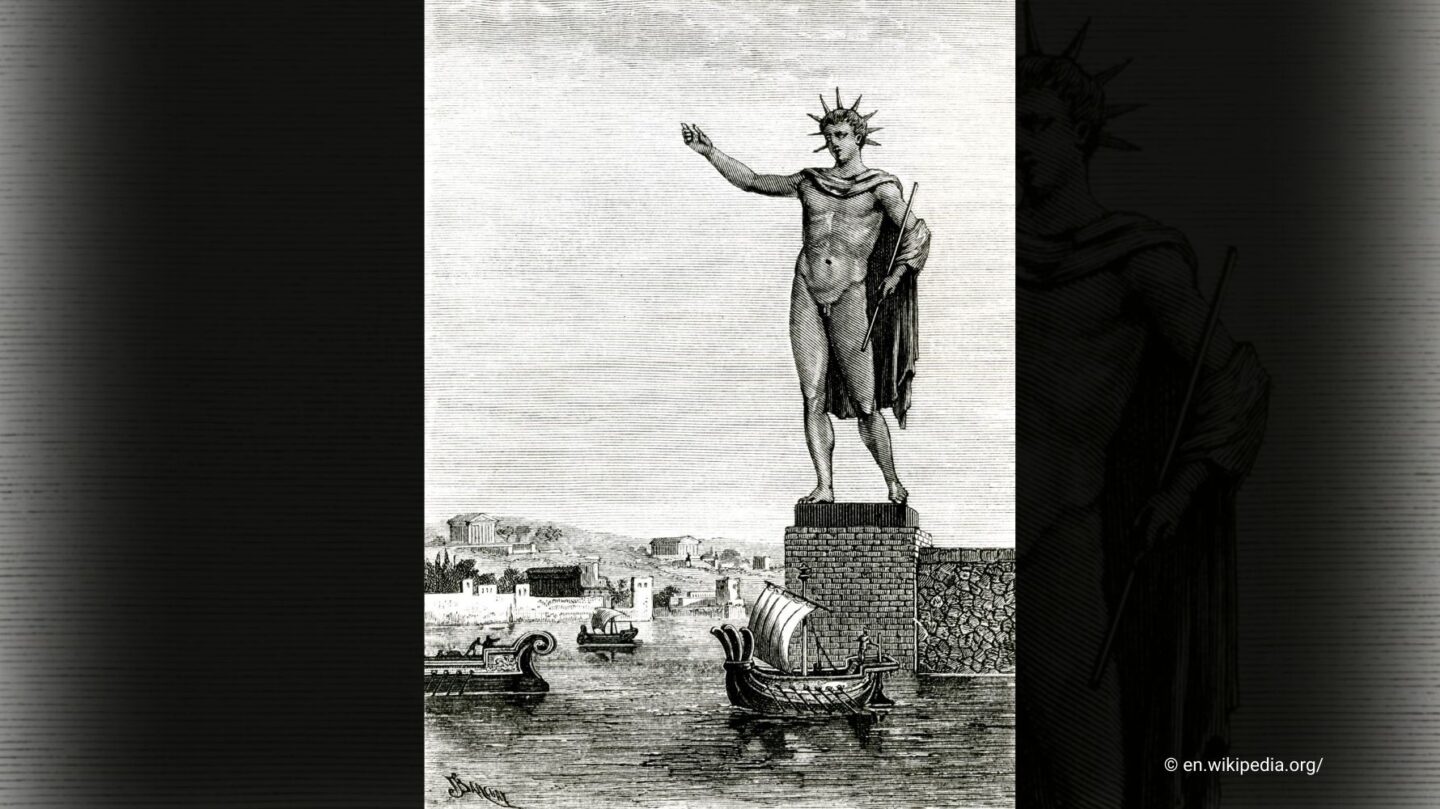A Monument to Victory
The Colossus of Rhodes, one of the Seven Wonders of the Ancient World, was a towering statue that symbolized the strength and resilience of the people of Rhodes. Built around 280 BCE, it commemorated their victory over the forces of Demetrius I of Macedon, who unsuccessfully besieged the island in 305 BCE.
Standing at approximately 33 meters (108 feet) tall, the Colossus was constructed by the sculptor Chares of Lindos. It depicted the sun god Helios, a deity deeply revered by the Rhodians. For decades, this marvel of engineering dominated the harbor of Rhodes, welcoming sailors from across the Mediterranean.
Construction: A Feat of Ancient Engineering
The construction of the Colossus was an extraordinary achievement. Using the spoils left behind by Demetrius’s defeated army, the Rhodians funded the statue’s creation, which took approximately 12 years to complete.
Chares and his team built the statue using bronze and iron, creating an outer shell of bronze plates supported by an iron framework. The interior was filled with stone to provide stability. Ingenious engineering techniques were employed, including ramps and scaffolding, to assemble the statue piece by piece.
While ancient accounts suggest the Colossus stood with one leg on either side of the harbor entrance, modern historians believe this was unlikely due to structural limitations. Instead, it likely stood on solid ground near the harbor.
The Colossus’s Short-Lived Glory
Despite its grandeur, the Colossus of Rhodes stood for only 54 years. In 226 BCE, a devastating earthquake struck the island, causing the statue to collapse. The remains lay where they fell for centuries, becoming a popular attraction for travelers and inspiring awe even in ruin.
The Rhodians chose not to rebuild the Colossus due to a prophecy warning against disturbing its remains. The fragments of the statue were eventually sold for scrap in the 7th century CE after Arab forces conquered Rhodes. According to legend, the bronze was transported on 900 camels, a testament to the statue’s massive size.
A Legacy That Endures
Although the Colossus no longer stands, its legacy endures as a symbol of human ambition and creativity. The statue inspired countless artists and architects, serving as a model for monumental sculptures such as the Statue of Liberty.
The Colossus’s inclusion in the Seven Wonders of the Ancient World highlights its significance in antiquity. Its story has captivated historians, writers, and travelers, sparking debates about its design and location.
In recent years, there have been proposals to rebuild the Colossus as a modern cultural landmark. These ambitious plans aim to honor the spirit of the original statue while showcasing contemporary engineering and artistry.
The Colossus in Myth and Reality
The Colossus of Rhodes was more than just a statue; it was a testament to the resilience and ingenuity of the Rhodians. Built in the wake of a military victory, it stood as a symbol of unity and pride for an island that played a vital role in the ancient Mediterranean.
Although lost to history, the Colossus continues to inspire awe and curiosity. Its story reminds us of the fleeting nature of even the grandest human achievements and the enduring impact of art and engineering on the collective imagination of humanity.
